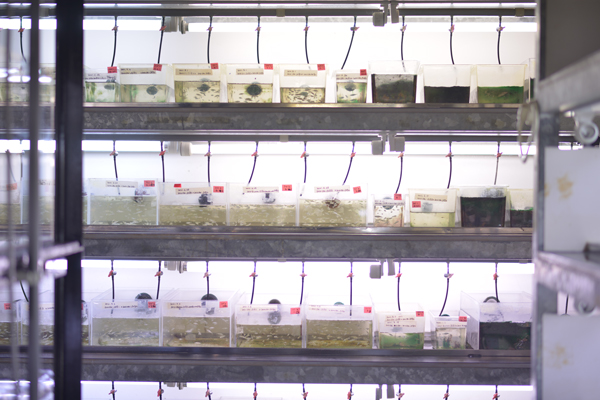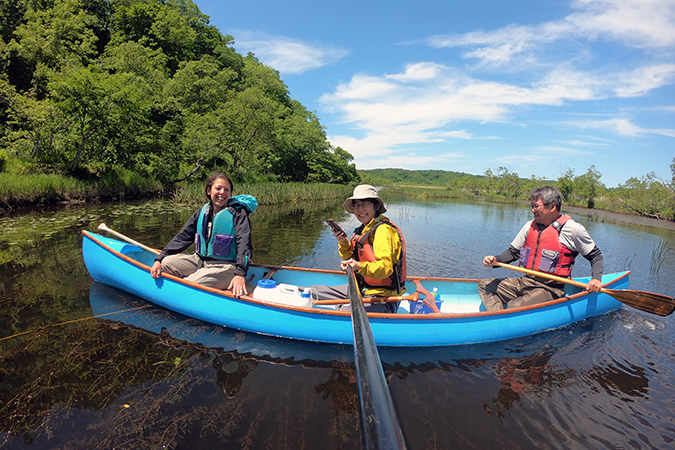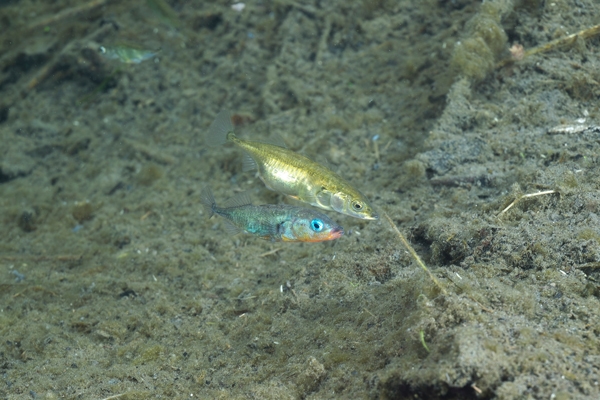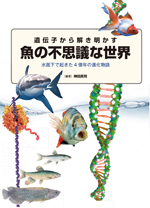How can some fish survive away from the sea?

An introduction to academia starting with “Why?”
After making a list of questions which would pique anyone’s interest, we asked faculty members on campus who might be knowledgeable in these areas to answer them from the perspective of their respective expertise. Let’s take a look into the world of research through questions that you feel you know something about, but cannot answer definitively when actually asked.
Q20. How can some fish survive away from the sea?
Fish like tuna live only in the sea, but some others, like salmon, make their way into rivers and lakes as well. How is it possible for some specific types of fish to survive in fresh water? Answered by Asano Ishikawa
Answered by Asano IshikawaAssociate Professor, Graduate School of Frontier Sciences
| Molecular Ecological Genetics |
The key is the ability to synthesize docosahexaenoic acid

One of the reasons is that fish have differing abilities to produce a fatty acid that is essential for their growth and survival. That fatty acid is called docosahexaenoic acid (DHA). There is plenty of DHA available in the sea. This is because small algae that live in the sea contain DHA in abundance, so the plankton that eat these algae, as well as the oily fish that, in turn, eat the plankton, also have DHA. River ecosystems, on the other hand, don’t have much DHA, so river fish have to produce it for themselves.
Our research has revealed that fish with the ability to synthesize DHA relocate from the sea into rivers, while those without such an ability tend not to do so.
We discovered this difference in ability to synthesize DHA by analyzing the genetic information of fish. I study a small fish called the three-spined stickleback from the Gasterosteidae family. One type of this fish is able to relocate from the sea into freshwater environments such as rivers and lakes, while another is not. The type that is able to do so has more of the Fads2 gene, which has an enzyme essential for the production of DHA. Moreover, when I investigated other fish whose genomes have already been sequenced, I was able to confirm that types of fish that live in the sea only have small numbers of Fads2 genes, while salmon, killifish and others that can move into freshwater have these genes in high numbers.
Adapting to new environments over and over again
Originally a sea-dwelling fish, the three-spined stickleback has expanded its habitat through a repeated process of migration and adaptation to life in rivers, lakes and the like. We’re still not sure when in this process the fish gained more Fads2 genes. For the three-spined sticklebacks I raise in my lab, at least, we know that the increase took place prior to the most recent ice age, which was around 10,000 years ago. The end of this ice age gave rise to new rivers and lakes. We believe that sticklebacks with an already elevated number of Fads2 genes moved into these new freshwater environments. However, given that this was just one of many ice ages, it’s possible that the fish acquired more genes during an earlier ice age.
Adapting to new environments and expanding feasible habitats is important for all lifeforms. For example, rivers and lakes don’t offer as many food sources as the sea, but they also contain fewer predators and rival species, which makes them ideal for spawning and growth of juvenile fish. Salmon, for example, are well known for migrating upstream from the sea to rivers in order to spawn.
Next, I want to find out how acquiring and losing certain genes in the course of evolution might affect other lifeforms in the same ecosystem. This could be done, for example, by creating a tiny ecosystem in a tank, comprising fish, organisms that the fish feed on, and other things that those organisms feed on in turn, such as fallen leaves and underwater grasses. We could artificially trigger genomic evolution and observe the resultant changes in the ecosystem as a whole. This kind of experiment is a pipe dream, but I’d love to do it someday.



Idenshi kara Tokiakasu Sakana no Fushigi na Sekai
(“The Fascinating World of Fish Explained through Genetics”) (Isshiki Publishing, 2019)
This book introduces a world full of enigmatic fish, from prehistoric fish to those that live in freshwater and seawater, and even electric fish. Ishikawa authored Chapter 7, which is about the evolution of the stickleback fish and its adaptation to a variety of freshwater environments.
* This article was originally printed in Tansei 45 (Japanese language only). All information in this article is as of September 2022.







